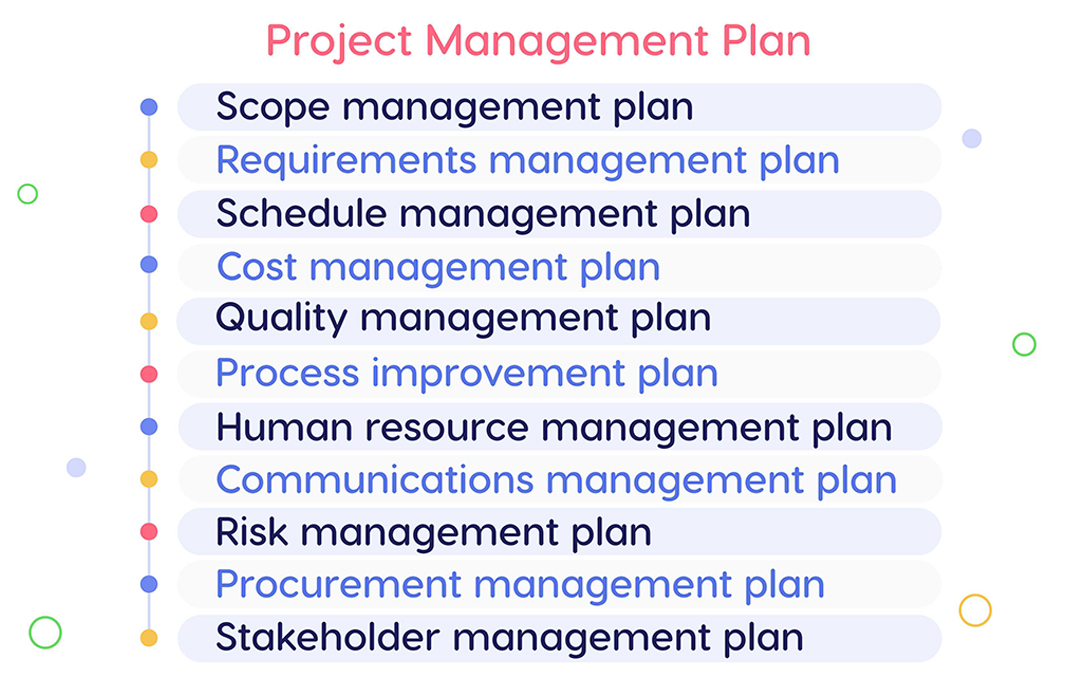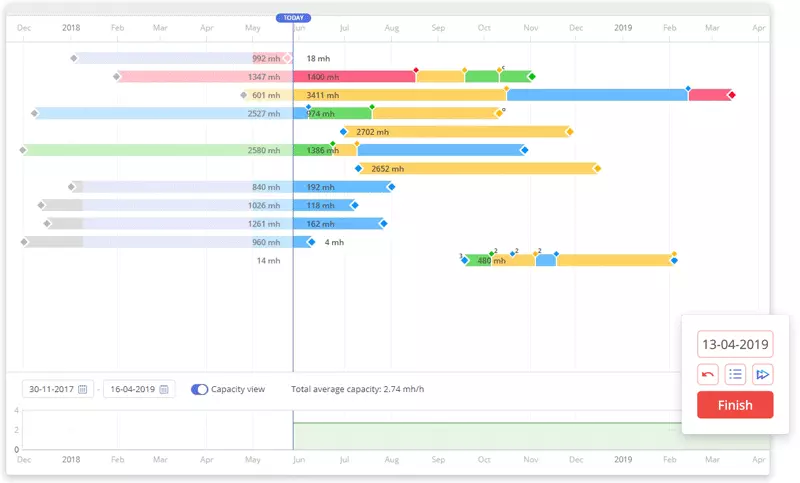Project management involves creating lots of documentation. If you look into project management standards, you will find at least a dozen of various plans, multiple types of reports, and numerous other documents. The good news is that a project manager doesn’t have to write all of them – the idea is to compile only those that will be essential for workflow efficiency and required by stakeholders.
We’ve prepared an overview of the most important project management documents ordered from the project initiation phase to its closure. Read further to get a handle on them.
A Business Case: Presenting the Idea of a Project
A business case is a document that helps decision-makers determine whether a project is worth the investment. This document presents a certain business problem and how implementing a project can solve it. In particular, a business case can be created in response to market demand, a customer request, organizational need, legal requirements, etc. The main purpose of this document is to give reasons for initiating a project.
Creating a business case has the following benefits for further project work.
- It helps prioritize an organization’s projects and work on those that deliver maximum value to a company.
- It contributes to more reasonable utilization of human and material resources – they won’t be wasted on initiatives that won’t bring desired value.
- Having studied the business case, stakeholders will have more clear and realistic expectations of project outcomes.
- It can be used as a reference point to assess the project progress at all phases of a project lifecycle.
In addition, a business case involves a cost-benefit analysis with the purpose to illustrate that the benefit a company gets from project completion will outweigh the investment.
A business case is most often created by a project sponsor, however, a project manager’s involvement is highly recommended. If a business case is approved, a company can start a project.
Read more: A Business Case in Project Management: Why Start a Project?
A Project Charter: From the Idea to Actual Work
A project charter (aka project initiation document) is created at the project initiation stage. The PMBOK Guide states that a project charter “is a document that formally authorizes the existence of a project and provides the project manager with the authority to apply organizational resources to project activities”. It’s a document that converts the idea of a project into the actual scheme of work.
A project charter has the following functions:
- It creates a formal record of a project;
- It gives a project a well-defined start and establishes its boundaries;
- It allows senior management to formally accept and commit to a project from start to finish;
- It gives a project manager the authority to execute a project.
A project charter covers the following information: the purpose of a project, its benefits and objectives, criteria for measuring the success of a project, the list of stakeholders and the name of a project sponsor, and a description of the final product (service) with interim deliverables. [1, 2]
A Project Management Plan: The Basis for Further Project Work
This is a fundamental document that describes how a project will be executed, monitored, controlled, and closed. It consolidates three baselines (time, scope, and schedule) as well as previously developed auxiliary plans shown in the picture below.

The contents of a project management plan can vary and aren’t limited to the above-mentioned components. It also can include a change management plan, an implementation plan, or other documents depending on the specificity of a project. At the same time, it’s not imperative to write all of these plans – be guided by the needs of a project.
A project plan is based on a project charter, historical data and lessons learned, templates, and industry (or government) standards.
Creating a project management plan is important because:
- it serves as a reference point to monitor the project’s progress;
- it makes the project flow more predictable and organized so that every participant knows what is expected of them;
- it increases the efficiency of the project management process.
A Work Breakdown Structure: Understanding the Project Scope
A work breakdown structure is a depiction of the whole project scope divided into components that can be estimated, scheduled, monitored, and controlled. It’s a scoping, planning, resource allocation, and risk identification tool. The main functions of a WBS are as follows:
- It’s the key input for the other project management processes (e.g., resource planning, cost estimation, schedule development, risk identification, etc.);
- It creates a framework that can be used by project team members as the basis for project reports;
- It’s a baseline for the change control process;
- It facilitates more efficient communication with stakeholders regarding the project scope;
- It provides all project participants with a better understanding of a project’s final deliverable;
- It helps identify resource requirements (employees’ knowledge, skills, and experience) and team members’ roles and responsibilities.
Therefore, a WBS becomes a sound foundation for further PM processes.
Read more: Creating a Work Breakdown Structure: What You Need to Know
A Risk Register: Forewarned is Forearmed
A risk register is a component of a risk management plan included in the project management plan. It outlines detailed information regarding possible project risks, specifies their priority and impact, indicates the ways of responding to risk-bearing events, and the people responsible for that. Having it at hand, project managers can keep track of potential risks and take timely measures to minimize their negative impact.
It’s important to regularly review and update the risk register as well as to share it with all the stakeholders and project team members.
Below is an example of this document.

Read more: Creating a Risk Register: All You Need to Know
Project Status Reports: Keeping Stakeholders Up-to-Date
These reports are written on a regular basis during the project execution phase. They outline a project’s current state to provide stakeholders with information regarding the project’s health. Project status reports can be of different types: the ones requested by stakeholders, weekly/monthly reports, the ones submitted to the project management office, and more. Typically, these documents cover the following information: the amount of work that has been completed, remaining work, budget and timeline summary, possible risks and responses, etc.
The purpose of status reports is to:
- help the project team keep a record of tasks, deadlines, expenses, etc.;
- enhance communication with stakeholders and deliver important information to them;
- detect issues in the workflow;
- track a project’s progress.
Therefore, status reports are an important tool to keep stakeholders updated and make sure that a project is on the right track. [3]
Lessons Learned Report: Learn From Experience

Speaking about the final phases of a project lifecycle, we’d like to mention the lessons learned report. It covers the information on both successful and unsuccessful experiences of a completed project as well as recommendations on improving future projects. The lessons learned should be documented throughout the whole project lifecycle. However, the final report is prepared at the final project phase and shared with stakeholders and all the team members.
Why is it important to create this report?
- It helps the project team learn from experience: taking it into account will prevent them from repeating the same mistakes in future projects.
- You can detect inefficient activities and find areas for improvement.
- Keeping track of efficient processes that worked well in a project will become the basis for developing best practices.
Finally, all these factors make it possible to improve the quality of future projects. [4]
Project Closure Document: Finalizing the Project
This is the final project management document. Without its approval by a project sponsor, the initiative cannot be considered closed. It covers the following information:
- Project accomplishments;
- Project performance in terms of time, budget, scope, and quality;
- Significant risks and issues;
- Links to project files.
This list isn’t exhaustive: the project closure document can also involve lessons learned, comments, a detailed financial summary, or any other important information that matters for a particular project. [5]
Pro Tip: Create only those documents that matter most to your project.
While it’s not a big problem to create documents if you manage one project, with multiple projects in the pipeline, this task becomes really challenging. Let’s take a look at how resource management software can assist.
Compiling Project Management Documents: How Does a Resource Management Solution Help?
We’ll examine how an RM tool makes preparing project management documentation easier through the example of Epiclow – the solution that perfectly meets the needs of a multi-project environment with a shared pool of resources.
- Before initiating a new project, you’d want to know whether your resources have enough capacity to complete it or you’ll need to look for extra people. Use a Future Load Graph to predict your resource groups’ capacity and foresee the output they will most likely produce. This data is essential to make the right decision. Besides, apply a What-if Analysis mode: add an extra project to the Pipeline and check how your multi-project environment will change: you can immediately see if this extra project is feasible. These features will help you when preparing a business case to get a better understanding of project costs.
- When it comes to determining proper responses to risks for a risk log, you can also try to play different scenarios in the What-if Analysis mode and see their consequences.

- In a multi-project environment, it’s extremely difficult to collect data on every project and compile necessary reports manually – the scope of information is too large. Epicflow can make this task much easier: it’s capable of generating reports covering basic planning criteria for current and previous months.
To find out more about Epicflow’s capabilities and how to maximize the efficiency of managing multiple projects and their shared resources, book a consultation with our expert.
References
- PM Student. Project Charter. How Important Is It? Retrieved from: https://pmstudent.com/project-charter-how-important-is-it/
- Project Management Institute. A Guide to the Project Management Body of Knowledge. 5th ed. Retrieved from: https://repository.dinus.ac.id/docs/ajar/PMBOKGuide_5th_Ed.pdf
- Usmani, Fahad. Project Status Reports: Templates and Examples. Retrieved from: https://pmstudycircle.com/project-status-reports/
- Usmani, Fahad. Lessons Learned in Project Management: Definition, Example, and Template. Retrieved from: https://pmstudycircle.com/lessons-learned/
- Harrin, Elizabeth. (2022). 9 Essential Project Management Documents (with Templates). Retrieved from: https://rebelsguidetopm.com/9-essential-project-documents/







